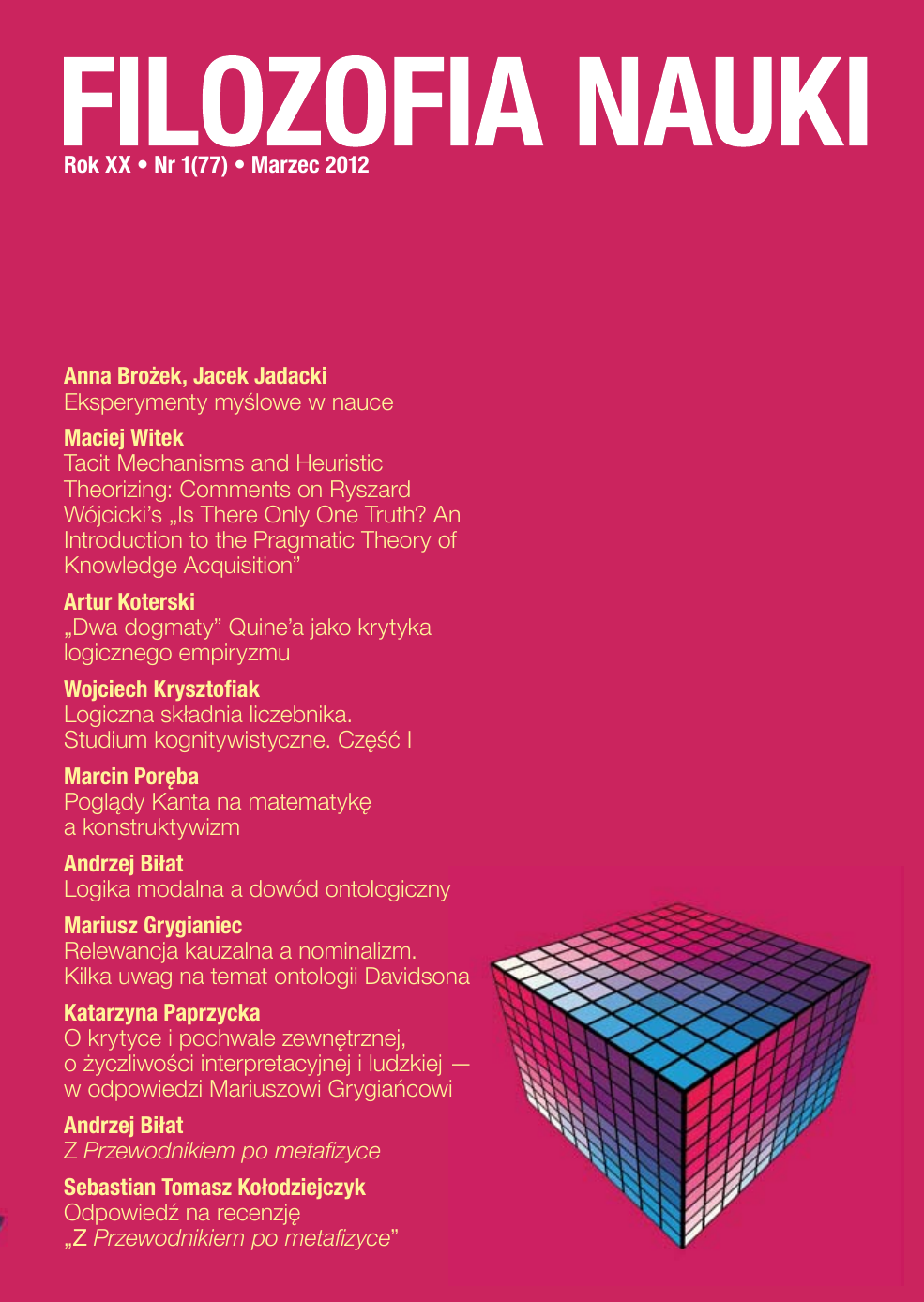Eksperymenty myślowe w nauce
Słowa kluczowe:
philosophy of science, thought experiment, real experiment, hypothesis testing, reasoningAbstrakt
Our conception of thought experiment may be summarized as follows. Let us suppose that we want to know what is entailed by the occurrence of a given state of affairs αk. Let us call the state of affairs entailed by it ‘βk’. If αk is «ready», it is sufficient to conduct respective observation: thanks to it we shall «see» βk. Otherwise, we have to bring out the occurrence of αk. This is what real experiment consists in. We have called αk “the basis of experiment”, and we call βk — “the result of experiment”.
If establishing that the occurrence of αk entails the occurrence of βk is the first step to put the hypothesis — let us call it ‘γ’ — stating that the occurrence of the phenomenon α entails the occurrence of the phenomenon β, the experiment is heuristic (α is here a type of states of affairs exemplified by αk, and β — is a type of states of affairs exemplified by βk). Other experiments are of testing character. If we already had put γ, then establishing that the occurrence of αk entails the occurrence of βk confirms this hypothesis, and if the occurrence of αk does not entail the occurrence of βk — the hypothesis is falsified.
If we are not able or we do not want to bring out the occurrence of αk, we may make use of a thought experiment: we suppose or imagine that αk occurs. Imagining or assuming only that αk occurs does not suffice, of course, for establishing what state of affairs occurs as an effect of the occurrence of αk (for instance, that βk is such one). At our disposal, we have to have a hypothesis — let us call it ‘δ’ — different from γ, such that δ and the sentence stating the occurrence of αk entails the occurrence of βk. We have called γ “the horizon of experiment”. Sometimes it happens that we realize that we accept γ by carrying out the thought experiment — when we ask ourselves why we presuppose or imagine that the presented basis has this, rather than some other, effect.
The result of thought experiment follows from its horizon; thus presenting the basis of the experiment is — from the theoretical point of view — superfluous. A thought experiment is nothing but the inference of the result from the horizon and basis. However, experiments fulfill some practical functions: they help us to realize the elements of the horizon and to illustrate or to exemplify important dependencies.
Let us ask ourselves why physicists use counterfactual thought experiments. Firstly, the differences in alternative descriptions of a certain part of reality come out in boundary situations and such situations are difficult to bring out (it is usually at least technically difficult) — they may be only thought (presented). All observable bodies move in accordance with both Newtonian and Einstein’s theories — the differences come out by enormous velocities. Secondly, one uses thought experiments because in our thoughts one may «arrange» idealized conditions which cannot be «created» in reality. Thirdly, the exemplifications presented as thought experiments appeal illustriously to imagination what simplifies the reception of new, unintuitive ideas among scientists.















 Filozofia Nauki | ISSN 1230-6894 | e-ISSN 2657-5868
Filozofia Nauki | ISSN 1230-6894 | e-ISSN 2657-5868